The Barnstable Patriot
By Marina Davalos
Jan 31, 2020
Troubled waters: Scientists test for links between lower herring counts & cyanobacteria
This is the first in a two-part series.

Low herring counts and increasing cyanobacteria blooms mean that more needs to be done to curb human activity when it comes to the Cape’s most precious resource – water.
Last month, Jo Ann Muramoto, director of science programs for the Association to Preserve Cape Cod (APCC) sent out a press release with the heading, “Results of 2019 volunteer counts of river herring on Cape Cod are a troubling mixed bag.”
River herring, which include alewife and blueback herring, are listed as a Species of Special Concern by NOAA and considered critically important in the coastal food web. Since 2005, there has been an ongoing moratorium on river herring catch, sale and possession, the press release states. While nine herring runs on the Cape actually increased in size from 2018, eight run sizes decreased.
“The year-to-year change is not always useful unless there’s a really dramatic change,” Muramoto said.
For example, the Marstons Mills River run size increased from 10,306 herring in 2018 to 35,092 in 2019. However, overall counts for the Marstons Mills River have been on a steady decline since 2012, when the count was 87,308. Volunteer training begins every year in February and March for herring run counts beginning in April and running through June, when herring are migrating upstream to spawn. Volunteers count for 10 minutes at a time, using a clicker counter.
While the main cause of the low herring run counts has been overfishing, pollution also factors in, and experts are beginning to weigh in on the ongoing threat of cyanobacteria.
Brad Chase, diadromous fisheries project leader with the State Division of Marine Fisheries, said that since cyanobacteria is a fairly recent phenomenon, there’s no actual cause and effect relationship between cyanobacteria and low herring counts – yet.
“Cyanobacteria is a concern for Cape Cod ponds, both in terms of potential reductions in the quality of river herring spawning and nursery habitat, and the broader concern for all aquatic life,” said Chase.
Andrew Gottlieb, executive director of APCC, agreed that this is a new area of interest and scientific inquiry. “We’ve identified it as a ‘maybe’ situation,” said Gottlieb, adding that the organization has obtained funding to pursue this avenue of exploration.
What is cyanobacteria, and what does it do?
In a healthy pond, Gottlieb said, the vegetation rooted at the bottom provides the oxygen that feeds the pond life. A process known as eutrification occurs when excessive plant and algae growth begins to limit factors needed for photosynthesis.
In layman’s terms? “The excess algae growth makes it hard for sunlight to get to the bottom aquatic plants,” said Gottlieb. “The algae clouds the water, and the result is less oxygen, creating a die-off effect. The algae becomes toxic because there’s simply too much of it, and other organisms can’t compete with it,” he said. Over large periods of time, this is a naturally occurring process, but experts say we’re speeding up that process – way too fast.
“Across the region, 40% of ponds had water quality that didn’t meet basic parameters of a healthy pond,” said Gottlieb. The three main causes of pollution in our ponds are outdated septic systems, over-fertilization and storm water runoff; but by far, the main instigator is the nitrogen and phosphorus that emanate from septic systems, seeping into our ground water and ponds, feeding the toxic algae blooms.
Think the algae dies and disappears in the winter? Think again.
“In cold weather the algae settles to the bottom of the pond and creates a dormant, over-fertilized organic layer – it smothers the plant life like a blanket, killing whatever’s on the bottom,” said Gottlieb. “When it gets warmer in the summer, it floats back up to the top, thus an entire negative feedback loop is created,” he said.
Two Barnstable High School seniors – Barnstable resident Graham Hempstead and Sofia Hailu of Centerville – are interns at the Osterville-based Barnstable Clean Water Coalition (BCWC). They have been monitoring three Centerville ponds: Bearse Pond, Long Pond and Lake Wequaquet, since last September.
“We test the nitrogen and phosphate levels and the dissolved oxygen in the water,” said Sofia Hailu, who plans to pursue environmental studies in college and eventually go into environmental law. All three of these ponds were closed to swimmers in 2019 due to toxic cyanobacteria blooms. “We’re working on it to see if it’s going to come back,” she said.
The interns spend one hour per day, three days a week on the ponds. “We take two water samples to measure if the nitrogen and phosphorus levels are going up or down – one sample from a meter deep and the other closer to the surface,” said Graham Hempstead, who also plans to pursue environmental studies in college.
According to Hempstead, nitrogen levels in the summer months are particularly alarming. “The amount of nitrogen that we’re putting in the waters in the summer is more than double what it should be,” he said.
Is there hope? Experts say yes. Stay tuned for Troubled Waters, Part 2: Solutions.
Marina Davalos is a freelance writer who lives in Cotuit. Follow her on Twitter @Marina_Davalos1.
